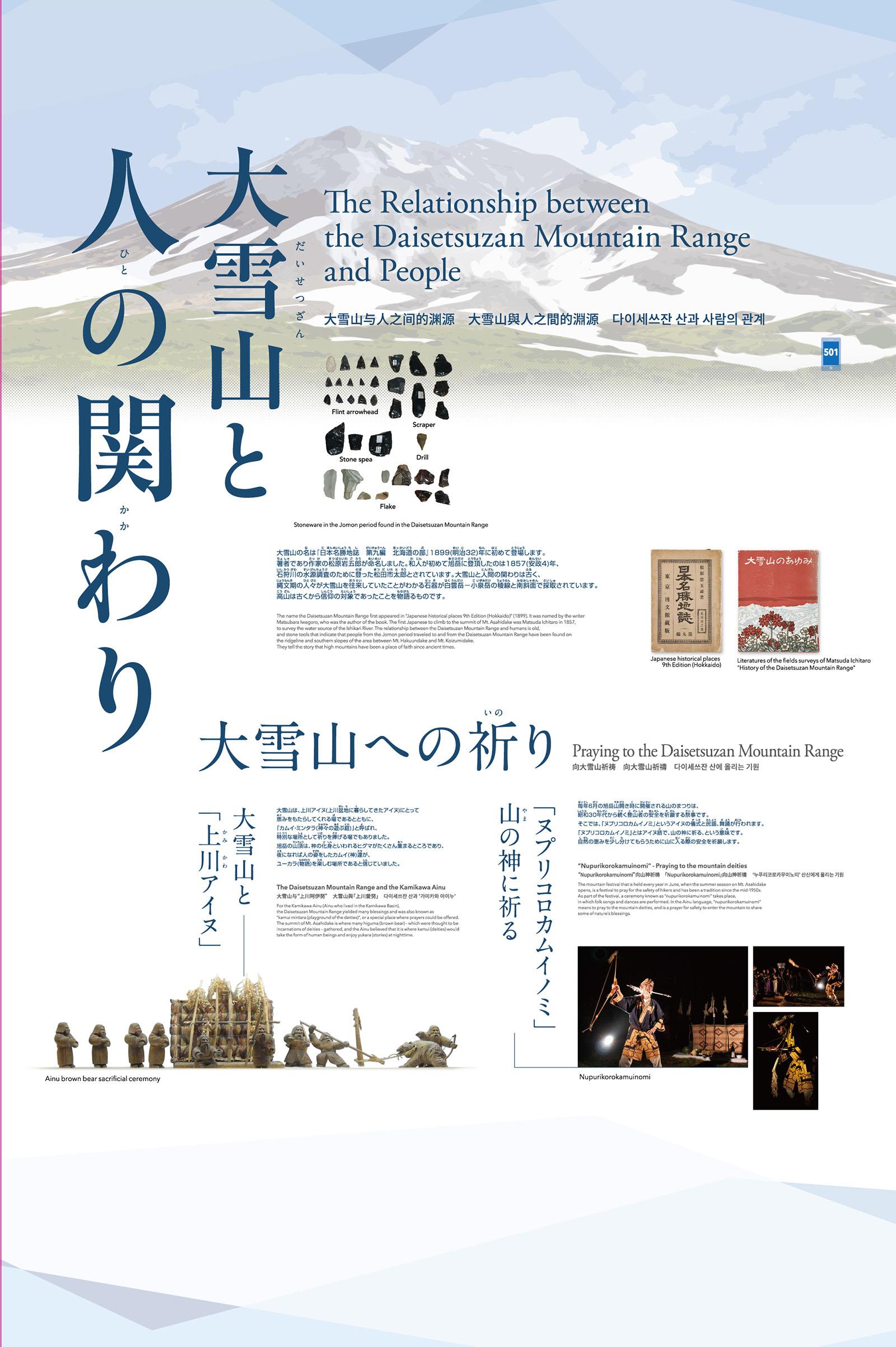




The name the Daisetsuzan Mountain Range first appeared in “Japanese History of Scenic Areas Version 9 Hokkaido” (1899). It was named by the writer Matsubara Iwagoro, who was the author of the book. The first Japanese to climb to the summit of Mt. Asahidake was Matsuda Ichitaro in 1857, to survey the water source of the Ishikari River. The relationship between the Daisetsuzan Mountain Range and humans is old, and stone tools that indicate that people from the Jomon period traveled to and from the Daisetsuzan Mountain Range have been found on the ridgeline and southern slopes of the area between Mt. Hakuundake and Mt. Koizumidake. They tell the story that high mountains have been a place of faith since ancient times.
For the Kamikawa Ainu (Ainu who lived in the Kamikawa Basin), the Daisetsuzan Mountain Range yielded many blessings and was also known as “kamui mintara (playground of the deities)”, or a special place where prayers could be offered. The summit of Mt. Asahidake is where many Higuma (Brown bear) – which were thought to be incarnations of deities – gathered, and the Ainu believed that it is where kamui (deities) would take the form of human beings and enjoy yukara (stories) at nighttime.
The mountain festival that is held every year in June, when the summer season on Mt. Asahidake opens, is a festival to pray for the safety of hikers and has been a tradition since the mid-1950s. As part of the festival, a ceremony known as “nupurikorokamuinomi” takes place, in which folk songs and dances are performed. In the Ainu language, “nupurikorokamuinomi” means to pray to the mountain deities, and is a prayer for safety to enter the mountain to share some of nature’s blessings.